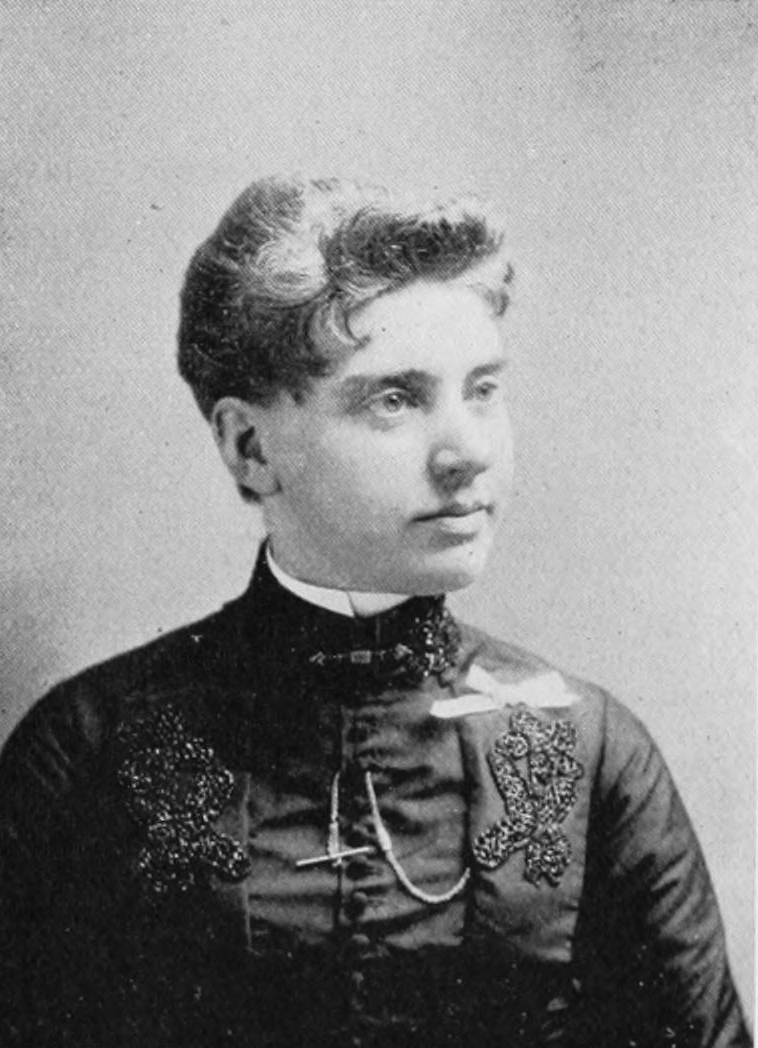Eva Kinney Griffith was an accomplished, ambitious woman who was part of the first class here at the University of Wisconsin-Whitewater. Born in Whitewater in 1852, Eva attended the Whitewater State Normal School from 1868-1871, aspiring to be a teacher. [1]
After she graduated, Eva began her extraordinary working life by teaching one semester at the Elkhorn High School and two semesters in Cold Spring, Wisconsin. She took a year off of teaching after that to pursue a career in journalism in Chicago. She temporarily returned to teaching from 1879 to 1880 in Hays City, Kansas. [2]
After finishing teaching in Kansas, Eva came back to Wisconsin and got involved in the temperance movement in 1883, joining the Wisconsin Women’s Temperance Union and participating as both a speaker and administrator for seven years. The Women’s Temperance Union was founded on December 15th, 1873, when a Boston doctor named Dr. Dio Lewis had a lecture in New York. After the lecture, he was invited to come to a Sunday evening church service and talk about temperance. After the church service, in which the doctor delivered a passionate speech on temperance, Rev. Lester Williams asked the women at the church to hold a meeting. Fifty women responded, prepared to take action, signifying the beginning of the important organization.[3] For Eva Kinney Griffith, she became known as the “Wisconsin Chalk Talker” for her inspiring illustrated lectures.[4] While she was actively involved in the temperance movement, she also became a writer, publishing two books: A Women’s Evangel (Chicago, 1892), and Chalk Talk Handbook (1887). As well as the books she wrote, she also wrote and published temperance lessons and poems in journals such as the Temperance Banner and the Union Signal. She also wrote and published in True Ideal, a journal that focused on purity and faith studies.
After her work as a temperance activist, she decided to move back to Chicago in 1891 and become a journalist again. She first became a special writer for the Daily News-Record, and then an editor on the Chicago Times. Through the Chicago Times, she publicly showcased her opinions on the temperance of alcohol and tobacco.

Eva also displayed advanced views on different topics for a woman living during the late 1800’s. One of the observations she made in The Author was that “as alcohol is a brain poison and nicotine, the active principle of tobacco, is a nerve poison, no writer who desires long life or aims for the highest in his work should indulge even moderately in the use of liquor and tobacco.” Along the same lines, she mentioned that “the unused organ is certain to lose its strength and fall an easy prey to disease.” [5]
Eva Kinney Griffith will be remembered as a trailblazer and an inspiration to women that, with perseverance, dedication, and a strong belief in yourself, you are capable of doing nearly anything that you set your sights on.
[1] Salisbury, Albert, Historical Sketches of the First Quarter-Century of the State Normal School at Whitewater, Wisconsin (Madison: Tracy, Gibbs and Co., 1893), 147.
[2] Salisbury, Albert, Historical Sketches of the First Quarter-Century of the State Normal School at Whitewater, Wisconsin (Madison: Tracy, Gibbs and Co., 1893), 147.
[3] “History of the WCTU,” WTCU, accessed November 19th, 2024, https://www.wctu.org/history
[4] Logan, John A, The Part Taken By Women in American History (Wilmington: The Perry-Nalle publishing co,1912), 677.
